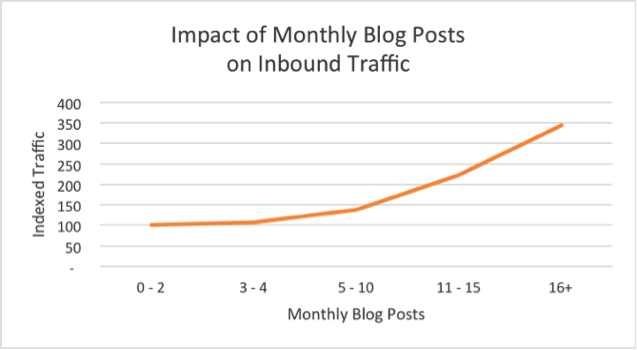In 2000, if you told me that blogging would eventually become an important – and highly valuable – part of most companies’ marketing plans, I would have laughed in the face of whatever LiveJournal draft I had open at the time. (I had multiple accounts on the site and others like it. I spent my time painstakingly writing basic HTML to change page colors, then abandoning each username after a few posts.)
In the early days of blogging, the fun part was getting started. The hard part was maintaining momentum. Even though blogs are now critical sales tools for so many organizations, the dynamic hasn’t changed. No matter the industry, a company’s blog can be the most valuable part of its online presence when it’s updated frequently with engaging content that’s useful to the target audience. Or, if it lacks strategy, planning and a willingness to pivot, a blog can become a stagnant well of promotional messages that turn customers away.
Below are some of the top mistakes we’ve noticed among corporate blogs. Some could begin at the outset of a site’s launch. Others might take root slowly as an organization grows. In any case, they can be deadly for their owners.
1. Some brands confuse blogging with selling.
A blog is the perfect opportunity to educate customers. Starting a new market segment? Launching a product that lacks direct competitors? Realizing you need to teach customers why they need help before they’ll sign up to receive it? A blog can be the perfect vehicle for this kind of top of funnel, educational content. However, if every post begins and ends with a commercial about why a brand’s product is the only one solving the industry need in question, the content will start sounding like a broken record.
2. Messages are stale and don’t offer value.
Blogs can share expert reactions to breaking trends, announce news without using a traditional press release and provide a window into company culture. To capture and keep readers’ interest, brands need to offer original insights, tips and stories based on their unique perspectives and experiences.
My favorite brand-owned blogs operate the same way my favorite news sites do – they have smart editors and solid writers, and I learn something useful every time I read them. Companies should aim to build blogs that readers will bookmark as steady sources of reliable, thoughtful information about an industry. Providing this level of quality involves posting about a variety of topics on a regular basis – according to HubSpot, inbound website traffic starts to pick up when a blog publishes more than four posts per month, and dramatically increases from there. Companies that publish more than 16 blogs per week can actually measure 3.5 times more traffic than those who publish less than four.
A valuable blog should also offer an easy way for readers to subscribe or dig deeper into the brand’s site, which helps avoid another cardinal blogging mistake:
3. Following a great post, readers have nowhere to go.
A blog can be the perfect top layer of a content and sales funnel. When readers find a topic they’re particularly interested in, a blog post can help guide them toward deeper insights and detailed information, while simultaneously forging a path into your company’s tailored content marketing strategy. Graphics, links and interactive elements like click-to-tweet can help direct users to more content when they’re embedded within the post, but often, the call to action that concludes a blog post is the most effective tool for guiding readers to related brand elements. For that reason, it’s imperative to be direct, get creative and test results with CTAs – Copyblogger reports that simply changing the color of a CTA graphic from gray to orange can increase clicks by 95 percent.
4. Content calendars are lists of goals, not actionable plans.
Content calendars tend to look – and function – differently for every company. That’s because there’s no right answer to the balance of evergreen ideas, timely topics, author input and review processes that works best for a given team. However, a few key elements can help keep a calendar on track:
- Transparency: Every stakeholder should have access to the blog calendar, and at least one person’s role should include keeping it updated.
- Ideation: Brands should plan the calendar a few months in advance, leaving room for evergreen posts and quick-response posts alike. Drawing ideas from different teams within the organization and areas of focus within the industry helps incorporate new messages and insights.
- Tone: A blog should maintain a consistent tone, and never get too stuffy. Just because a company works with complicated topics and technologies doesn’t mean its readers want to speak that language in their spare time. Avoiding jargon at all costs helps free a brand to write about points and ideas that matter. Staying on tone starts with the topics that make it into the calendar.
5. There’s no way to measure ROI.
When it comes to the best way to calculate content marketing ROI, here’s the short answer: companies should outline the benchmarks that matter most, aim directly for them and track their progress. Some of these metrics might include website traffic, call-to-action performance and email conversions. However, some teams might see social shares, distribution or inbound links as more of a priority – and as a result, those brands should primarily focus on those elements. In any case, as a blog evolves, the managing team should continually check in and determine whether it’s meeting the company’s goals. Doing so will shed light on ways the team can improve its work, and ring an alarm when it’s time to update those goals across the board.

 (
(